How I saved big cats by introducing ‘magic dogs’
- Published
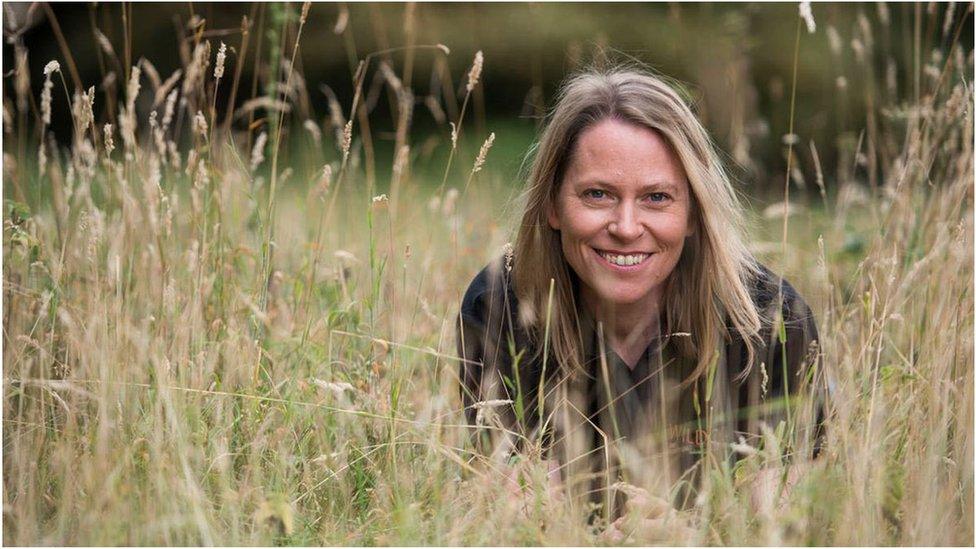
Amy Dickman has had a number of narrow escapes during her years working with big cats, but her closest shave came when tackling lion-killing warriors.
It was late evening and Amy Dickman was walking through the bush to a household she suspected was celebrating a lion kill.
"It was dark but I suddenly got the feeling I was being watched," Dickman recalls. "I was concerned that a big cat might be lying in wait."
For a brief moment the moon appeared from behind the clouds, illuminating the landscape.
"I realised I was surrounded by young men carrying spears. Then it went dark again. I was terrified," she says.
This was Dickman's first encounter with warriors from the Barabaig - a community with a history of killing non-Barabaig people and still widely feared.
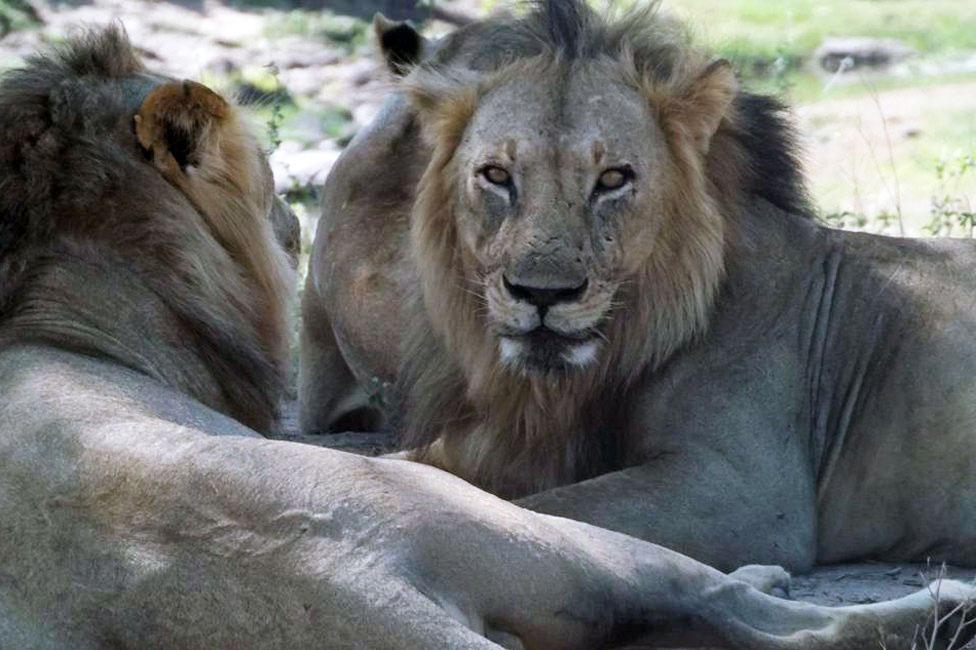
A conservation biologist from Devon, Dickman has been running a big carnivores project in Ruaha, southern Tanzania, since 2009.
An estimated 3,000 lions, one in 10 of the world's wild population, live in the remote region - a massive unfenced national park, bounded by tribal lands.
Dickman knew she had to make contact with Barabaig warriors to find out whether humans and big cats were coming into conflict, so when she heard sounds of celebration she set off with two volunteers.
What they hadn't realised was that the Barabaig were on high alert, due to a power struggle with the Maasai, with accusations of cattle rustling flying between the two sides.
After the moonlight revealed the circle of warriors with raised spears, one of Dickman's assistants hastily called out: "We're just doing research, there's no problem!"
"Thankfully they realised we were bumbling around like buffoons and weren't a threat," Dickman says. "They agreed to come and talk to us at our camp."
The next day Dickman's team sat down with a delegation of Barabaig warriors to get to know one another.
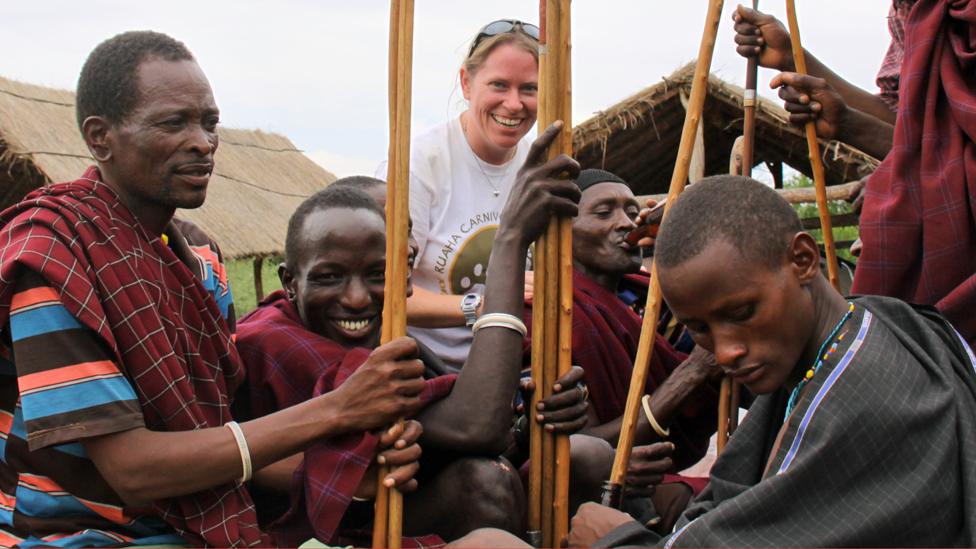
"I told them I had been scared one night when they had passed our camp chanting and banging spears, as I thought they might attack us," Dickman says.
"They laughed and explained it was a ceremony they do after making the first bricks in the year.
"Then they wanted to know what I kept in the Tupperware containers. I showed them it was sugar and they looked abashed. They said they had thought it could be body parts."
The warriors also revealed that lions regularly attacked the livestock in the villages on the edge of the national park. It was worse in the rainy season when the lion's natural prey travelled away from the river.
"Lions were viewed as vermin," Dickman says.
Killing a lion provided a warrior with both wealth and status.
"We had found a lot of lion carcasses with the right paw cut off," Dickman says.
"It turns out warriors take the central claw to the witchdoctor who agrees a price in cattle that they can collect from nearby households. They can get around 20 cattle for one lion, which is worth $4,000."
Dickman began collecting data on the number of lion kills and was staggered by the results.
"In 2011, 37 lions were killed around just one village we were working in. That was equivalent to half the wild lions trophy-hunted across the whole of Africa in a year."
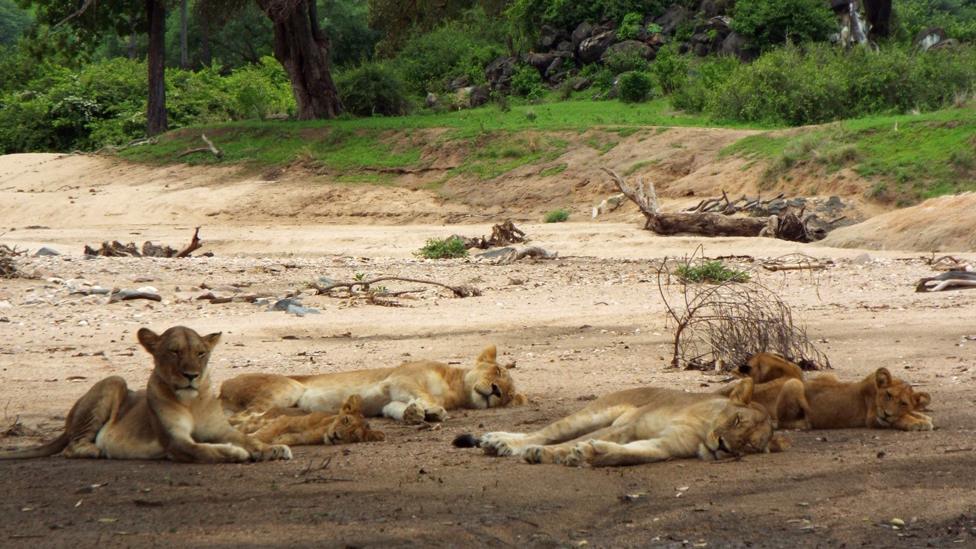
When Dickman first arrived in southern Tanzania she found there was just a small pop-up tent to sleep in.
It had been placed on the trail hippos used to reach water, so she moved it away from the river to avoid being trampled, and assumed she would be safe.
"But on my first night a male lion came sniffing around my tent," she says.
She grabbed a deodorant and pocket knife in case she had to defend herself, but at that point the lion just lay down on the tent, trapping her arm.
"I was terrified. I thought it was going to eat me. Then I realised it had fallen asleep," she says.
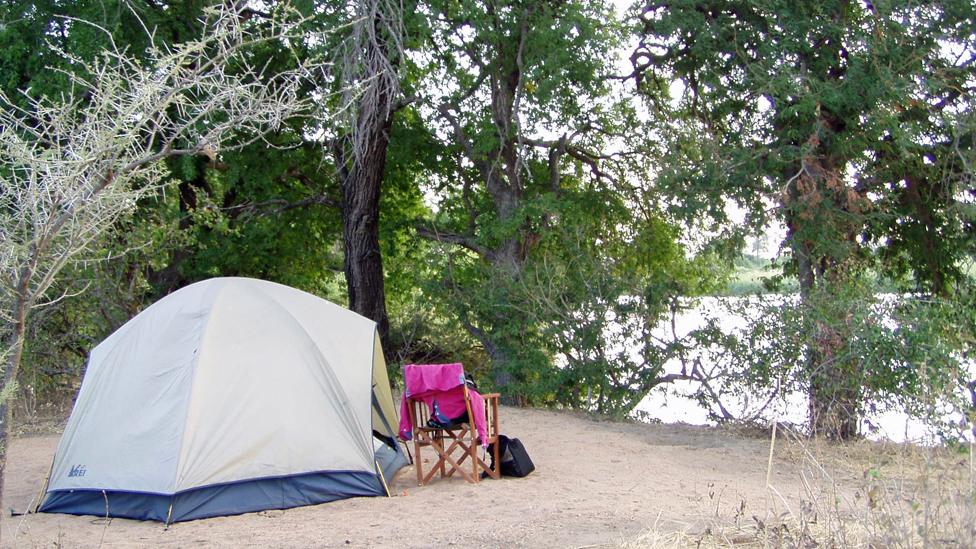
The tent on the hippo trail
Inside the tent, the temperature began to rise.
"I genuinely thought I would die from heat exhaustion as it got so hot," Dickman says.
She thinks she passed out shortly afterwards and woke the next morning to find the lion had gone. That night she made sure she slept on a raised platform.
"It was my closest shave with a lion but actually most of my close shaves came when interacting with some of the local people," she says.

Find out more
Listen to Amy Dickman describe how she took a leopard to the dentist on Outlook, on the BBC World Service

But Dickman's team began to make progress. They reduced attacks on livestock by reinforcing thornbush cattle enclosures with wire and introducing specially bred guard dogs.
"Dogs weren't really valued there at the time. The idea you could train dogs was quite alien to them," Dickman says.
"I remember telling our camp dogs to sit in Swahili while talking with some locals and the meeting ground to a halt. They wanted to know where I had got the magic dogs from, dogs that could speak Swahili."
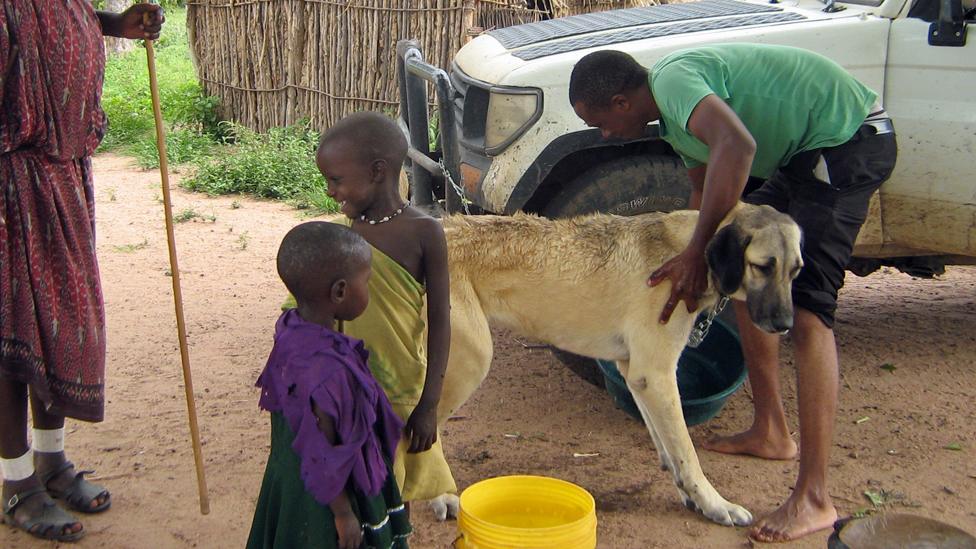
They introduced a handful of Anatolian dogs, which were first bred for guarding livestock in Turkey, but had been used successfully by the Cheetah Conservation Fund (CCF) in Namibia, where Dickman had worked for six years.
That role had also had its hair-raising moments.
"One time we took on a leopard with a broken tooth that had been captured by a farmer. The tooth would have to be replaced if he was to make it back into the wild," Dickman says.
The team called a local dentist and booked an appointment, leaving out the vital information that the patient would be an anaesthetised leopard.
"He wasn't happy but eventually we persuaded him to take a look, and he got quite enthusiastic," Dickman says.
The dentist made a false tooth using an amalgam of steel and silver, as it needed to be very strong. Each time they went back for a fitting people would crowd into the dentist's surgery in order to get a glimpse of the big cat.
"On the final fitting the dentist said he had seen the leopard open his eyes, but we didn't believe him. Minutes later the leopard pulled the top half of his body off the table," Dickman says.
People escaped through doors and windows as the big cat was put under again.
"I'm glad that was the last fitting as I don't think the dentist would have had us back."
In Tanzania, the Anatolian guard dogs proved a success. Dickman's project also offered local warriors the role of Lion Defenders - conservation jobs that came with responsibilities and status.
"We taught Lion Defenders to read and gave them the chance to travel. They can buy their own cattle with their pay."
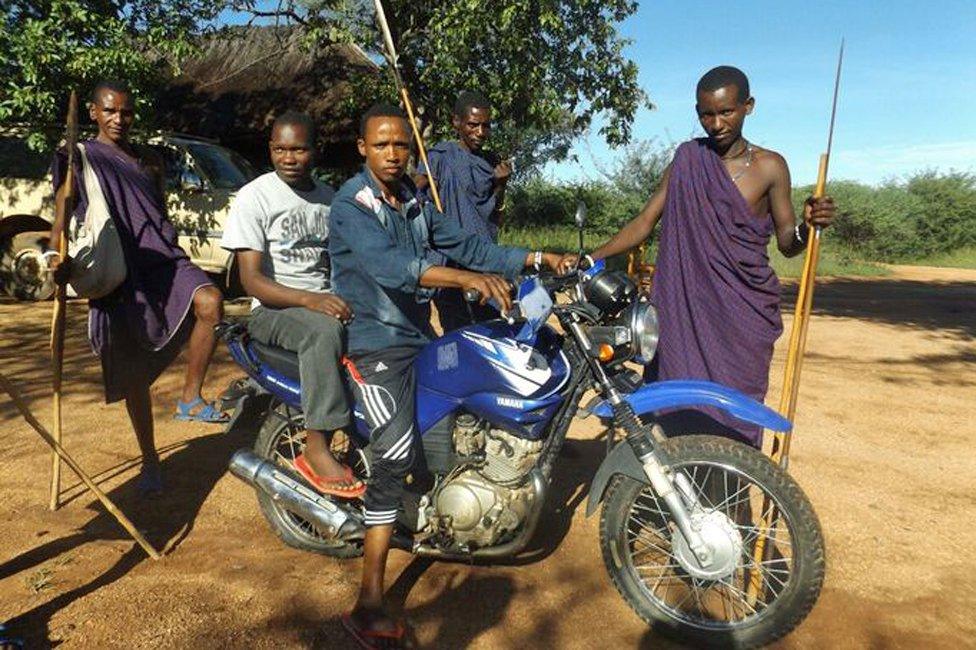
The wider community is involved in conservation via a camera trap competition. Dickman's team has provided villagers with equipment and training, and points are allotted for the wildlife recorded, based on the size of the animals and how endangered they are.
These points can then be exchanged for money towards healthcare, education and vet medicine.
"We are saying, 'If you want extra benefits, the way to get them is to protect the wildlife better,'" Dickman says.
The project seems to be working. Livestock killings have fallen by 60% and lion killings by 80% over a five-year period.
They currently work with 10 villages but plan to expand it to all 22 that adjoin the park. But for that they will need more money.
"There isn't a meaningful way to make the project self-sustaining as these communities wouldn't be the ones benefitting from tourism," Dickman says.
Listen: Dr Amy Dickman tells BBC Outlook how she took a leopard to the dentist
"However, if we consider lions to be part of our global heritage then we need to fund this. We can't expect people on less than $1 a day to pay the price."
Dickman now splits her time between Tanzania, the US, where she raises funds, and the UK, where she has a husband and a two-year-old daughter.
"The hardest part of my job is being away from my daughter Millie, but I know I'm making a difference," Dickman says.
"People don't realise how at risk lions are. They have halved in the past 20 years and there are now fewer than 25,000 left. Their fate hangs in the balance."
Dickman says she will never lose her wonder of big cats.
"It's very primal when you see them. Not long ago I was changing a tyre and got the sensation I was being watched. I looked up and a leopard was sitting on the other side of the road looking at me.
"He was quite young and I didn't feel scared, as he just looked curious. We watched each other for a minute before he disappeared in to the bush. Seeing things like that renews your soul."
The Ruaha Carnivore Project, external is part of Oxford University's Wildlife Conservation Research Unit

Join the conversation - find us on Facebook, external, Instagram, external, Snapchat , externaland Twitter, external.